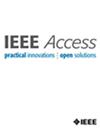Entity Pair Relation Classification Based on Contrastive Learning and Biaffine Model
IF 3.6
3区 计算机科学
Q2 COMPUTER SCIENCE, INFORMATION SYSTEMS
引用次数: 0
Abstract
In natural language processing, the biaffine model can effectively captures sentence structure and word relationships for tasks like text classification and relation extraction. However, it struggles with entity pair relation classification, particularly in overlapping or complex scenarios. To address this, this paper proposes BERT-CL-Biaffine, an improved relation classification model integrating bidirectional entity contrastive learning and a global pointer network. The model enhances the biaffine architecture by training it to identify entity boundaries and leveraging contrastive learning to strengthen semantic associations between overlapping entity pairs. Experiments on the NYT and WebNLG datasets demonstrate that BERT-CL-Biaffine outperforms baseline models, achieving F1 score improvements of 1% and 1.2%, respectively. The model excels in classifying overlapping entity pairs and handles challenges like imbalanced relation types and ambiguous entity features, particularly in complex scenarios. The results validate that bidirectional entity contrastive learning and global pointer networks significantly enhance the biaffine model’s feature representation and classification performance. This approach offers a robust solution for relation extraction in intricate textual contexts.基于对比学习和Biaffine模型的实体对关系分类
在自然语言处理中,biaffine模型可以有效地捕获句子结构和单词关系,用于文本分类和关系提取等任务。然而,它在实体对关系分类方面遇到困难,特别是在重叠或复杂的场景中。为了解决这个问题,本文提出了BERT-CL-Biaffine,这是一种集成了双向实体对比学习和全局指针网络的改进关系分类模型。该模型通过训练biaffine识别实体边界和利用对比学习来增强重叠实体对之间的语义关联来增强biaffine架构。在NYT和WebNLG数据集上的实验表明,BERT-CL-Biaffine优于基线模型,分别实现了1%和1.2%的F1分数提高。该模型擅长对重叠的实体对进行分类,并处理不平衡的关系类型和模糊的实体特征等挑战,特别是在复杂的场景中。结果表明,双向实体对比学习和全局指针网络显著提高了双仿模型的特征表示和分类性能。该方法为复杂文本环境中的关系提取提供了一个可靠的解决方案。
本文章由计算机程序翻译,如有差异,请以英文原文为准。
求助全文
约1分钟内获得全文
求助全文
来源期刊

IEEE Access
COMPUTER SCIENCE, INFORMATION SYSTEMSENGIN-ENGINEERING, ELECTRICAL & ELECTRONIC
CiteScore
9.80
自引率
7.70%
发文量
6673
审稿时长
6 weeks
期刊介绍:
IEEE Access® is a multidisciplinary, open access (OA), applications-oriented, all-electronic archival journal that continuously presents the results of original research or development across all of IEEE''s fields of interest.
IEEE Access will publish articles that are of high interest to readers, original, technically correct, and clearly presented. Supported by author publication charges (APC), its hallmarks are a rapid peer review and publication process with open access to all readers. Unlike IEEE''s traditional Transactions or Journals, reviews are "binary", in that reviewers will either Accept or Reject an article in the form it is submitted in order to achieve rapid turnaround. Especially encouraged are submissions on:
Multidisciplinary topics, or applications-oriented articles and negative results that do not fit within the scope of IEEE''s traditional journals.
Practical articles discussing new experiments or measurement techniques, interesting solutions to engineering.
Development of new or improved fabrication or manufacturing techniques.
Reviews or survey articles of new or evolving fields oriented to assist others in understanding the new area.
 求助内容:
求助内容: 应助结果提醒方式:
应助结果提醒方式:


